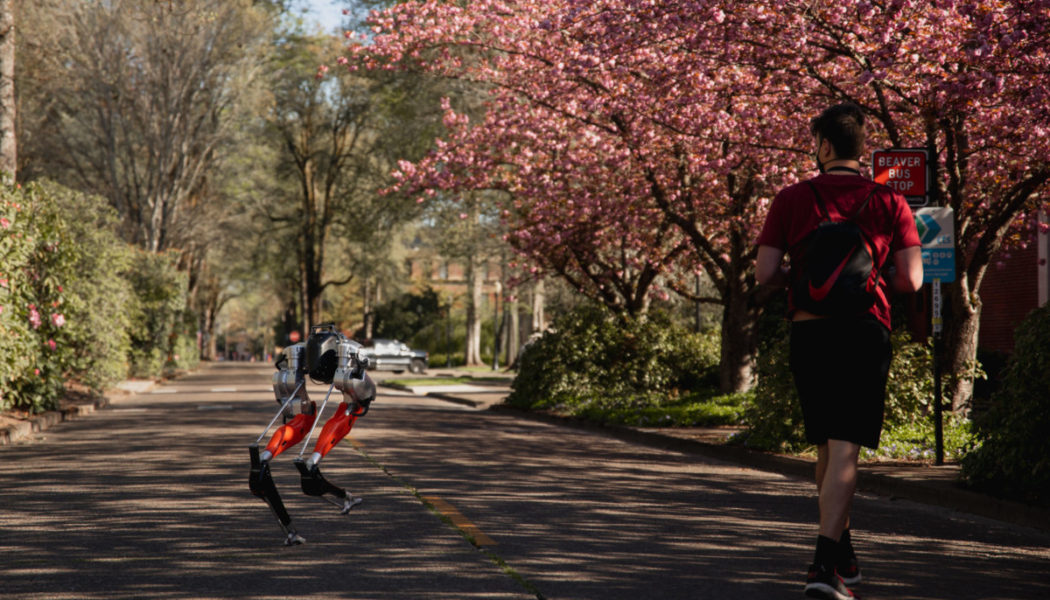Researchers from Oregon State University have coaxed a bipedal robot off the couch to successfully complete the first ever robotic 5 kilometer outdoors run. The bot, Cassie, completed the route in 53 minutes, untethered and on a single battery charge. So next time you’re out for a jog, remember: that’s the time to beat if you want out-pace the killer robots.
(For now.)
Cassie is the creation of OSU spin-off Agility Robotics, which has been pushing the commercial case for bipedal robots for a while. Cassie itself was the company’s first product, manufactured between 2017 and 2019, and now embraced by research labs. Agility now makes an updated bipedal bot, Digit, which has arms to handle packages and has been used by Ford as part of a research project into autonomous delivery robots.
Bipedal machines are a tricky sell, though. Their big advantage is they can easily navigate spaces made for humans, like stairs and tight corridors. But their bipedalism means they’re inherently less stable, especially compared to quadrupedal robots like those made by Boston Dynamics. It’s just harder to knock something over when it’s standing on four legs.
:no_upscale()/cdn.vox-cdn.com/uploads/chorus_asset/file/22745258/Screen_Shot_2021_07_28_at_12.53.48_PM.png)
The team behind Cassie say this might change as new deep learning techniques allow bipedal robots to develop new ways to stabilize themselves during locomotion. These methods aren’t flawless, though. Cassie fell twice during its 5K run, for example — once because its computer brain overheated, and the other because its human controller directed it to take a corner too quickly. (Yes, Cassie did not run under its own directions.)
OSU robotics professor and Agility Robotics co-founder Jonathan Hurst is still confident bipedal bots will become the norm, blending in with humans. “In the not very distant future, everyone will see and interact with robots in many places in their everyday lives, robots that work alongside us and improve our quality of life,” said Hurst in an OSU blog post.
Who knows, maybe you’ll even see them out on your morning run.










